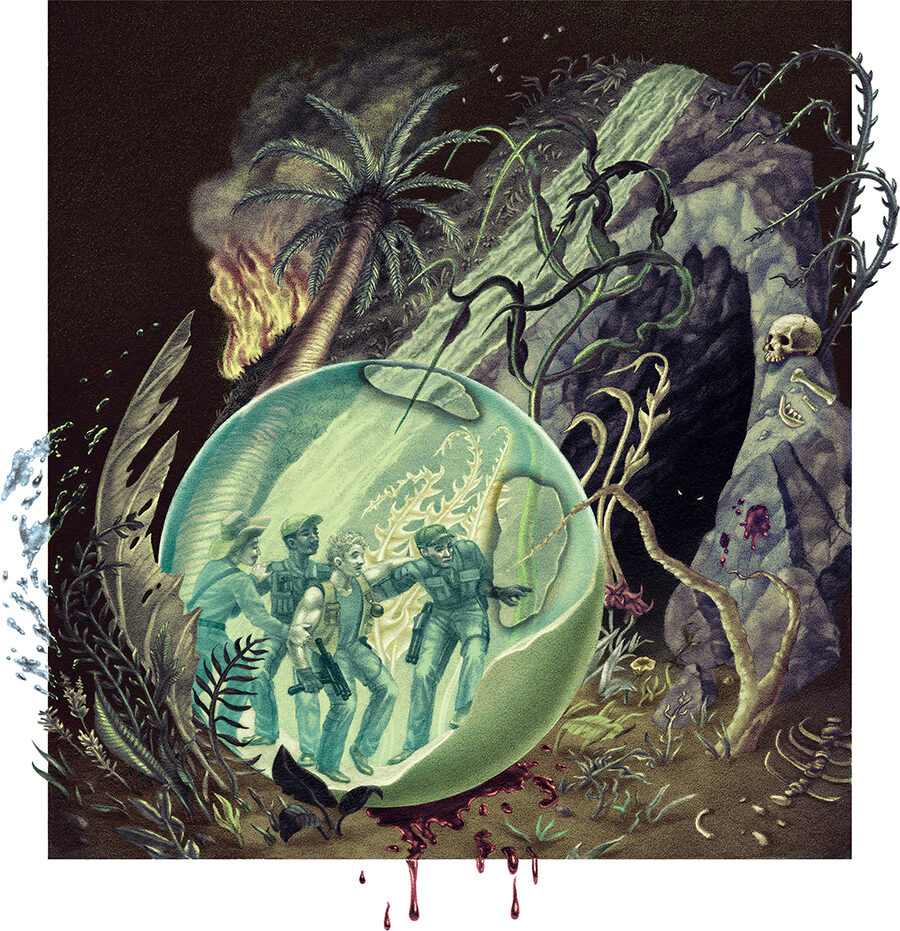
Illustration by Chloe Niclas
Discussed in this essay:
Predator, by Ander Monson. Graywolf Press. 264 pages. $16.
Children, do you remember Predator? A Reagan-era sci-fi action movie in which a team of black-ops commandos, led by Arnold Schwarzenegger, is called on to find, somewhere in the jungles of Central America, another team that has gone missing. Said lost are located: dead, skinned, and made into ornaments hung in the trees. It will turn out that a highly evolved space-biped is hidden in the jungle, hunting human beings. He will kill all the soldiers, one by one, until only Arnold is left,…






























































































